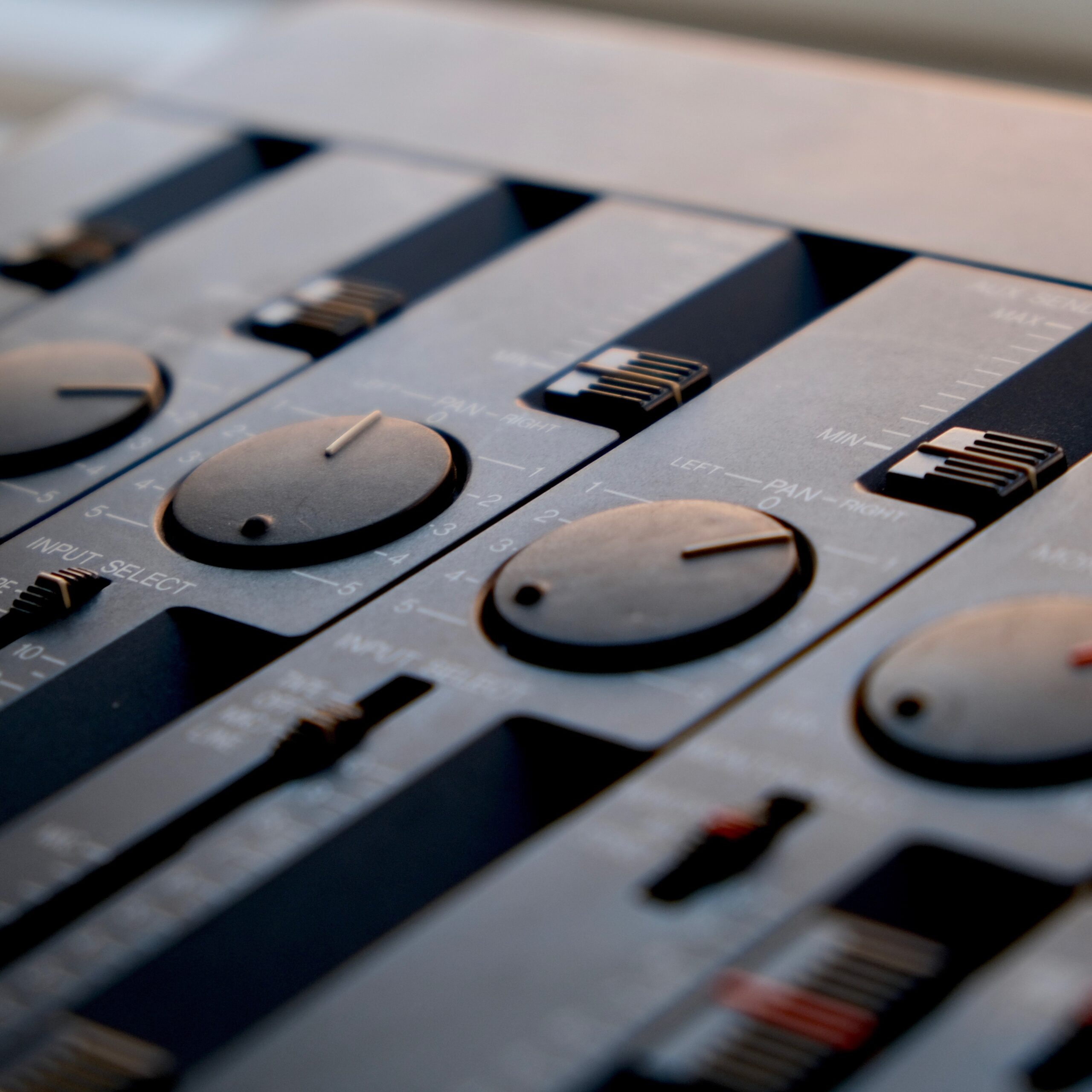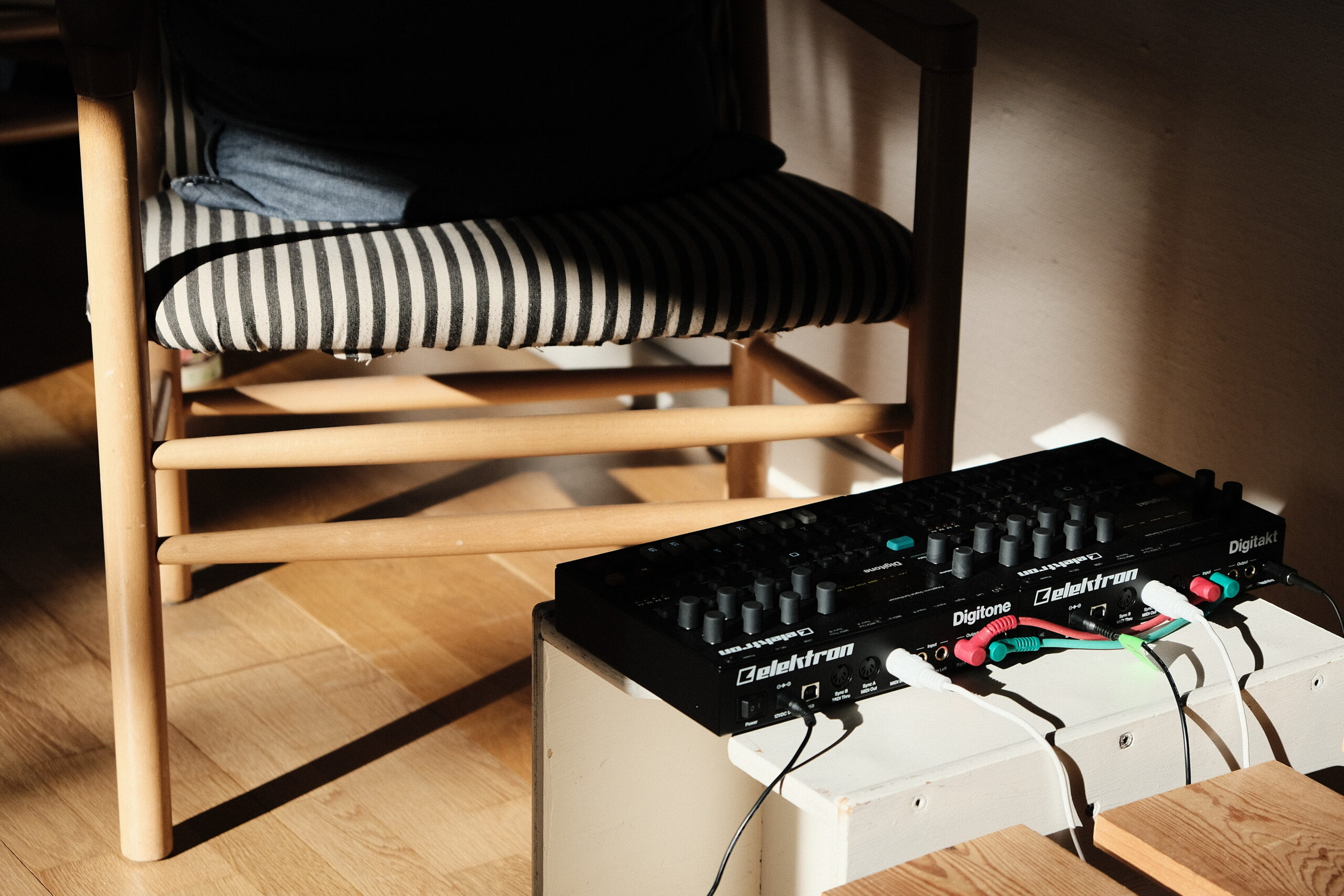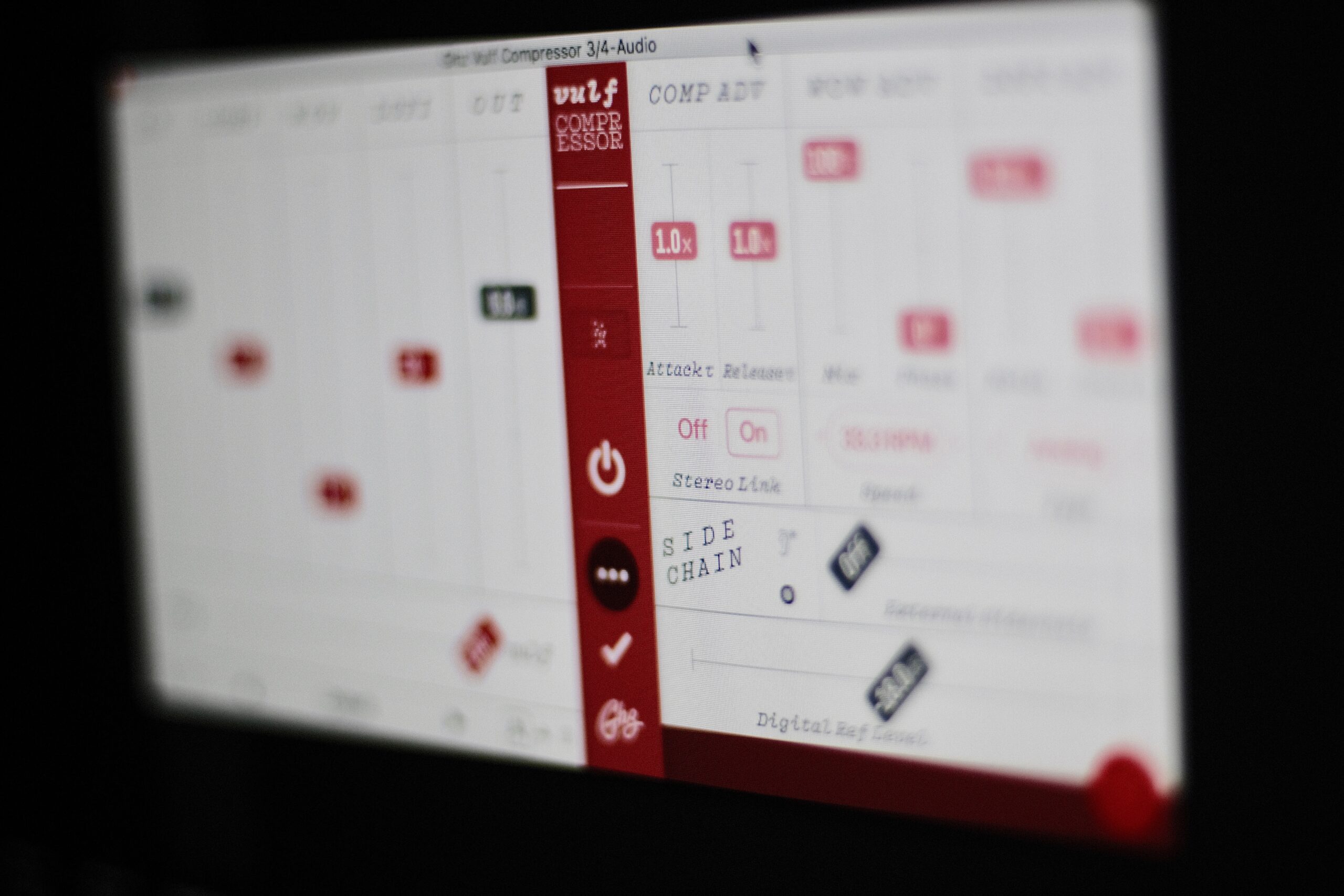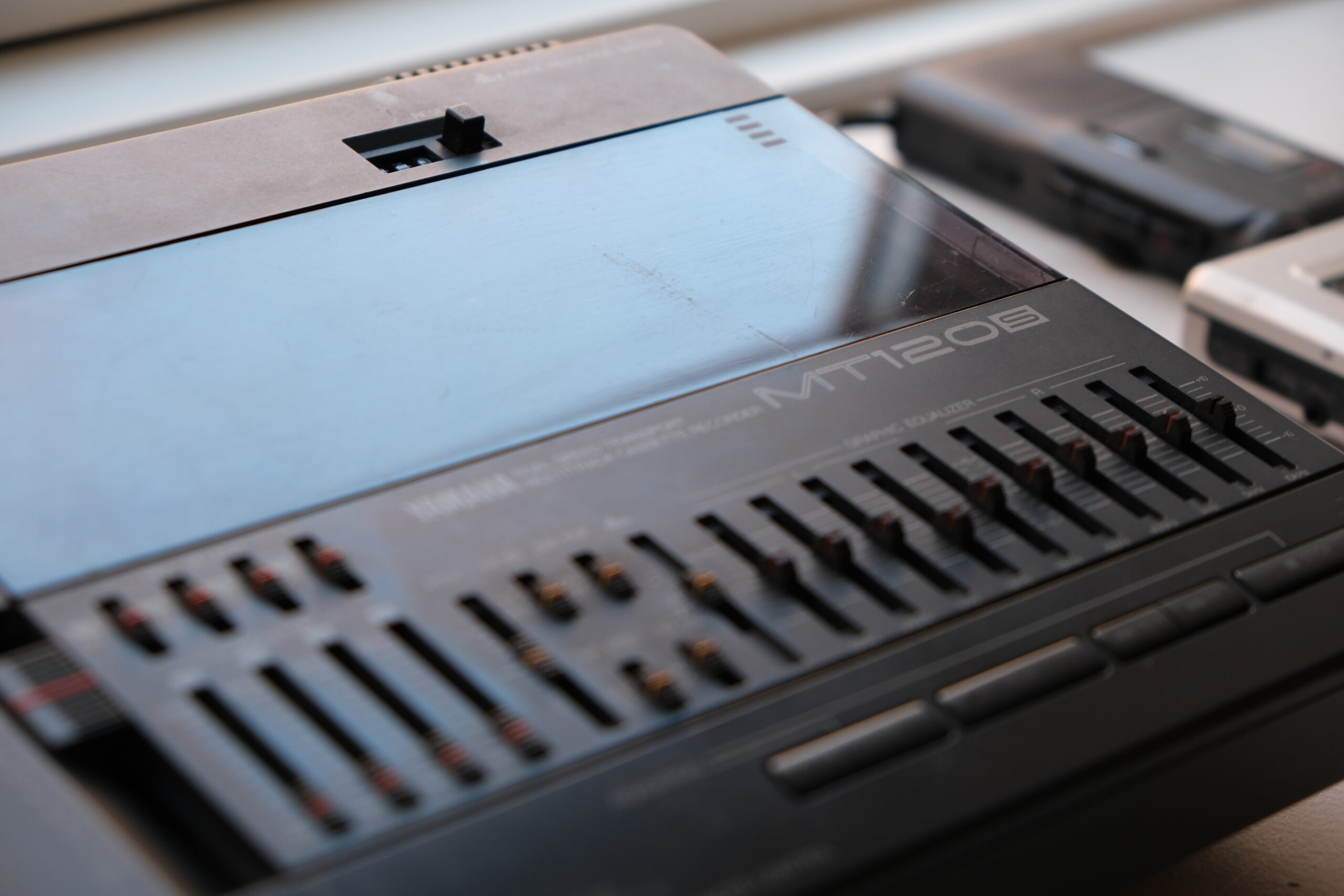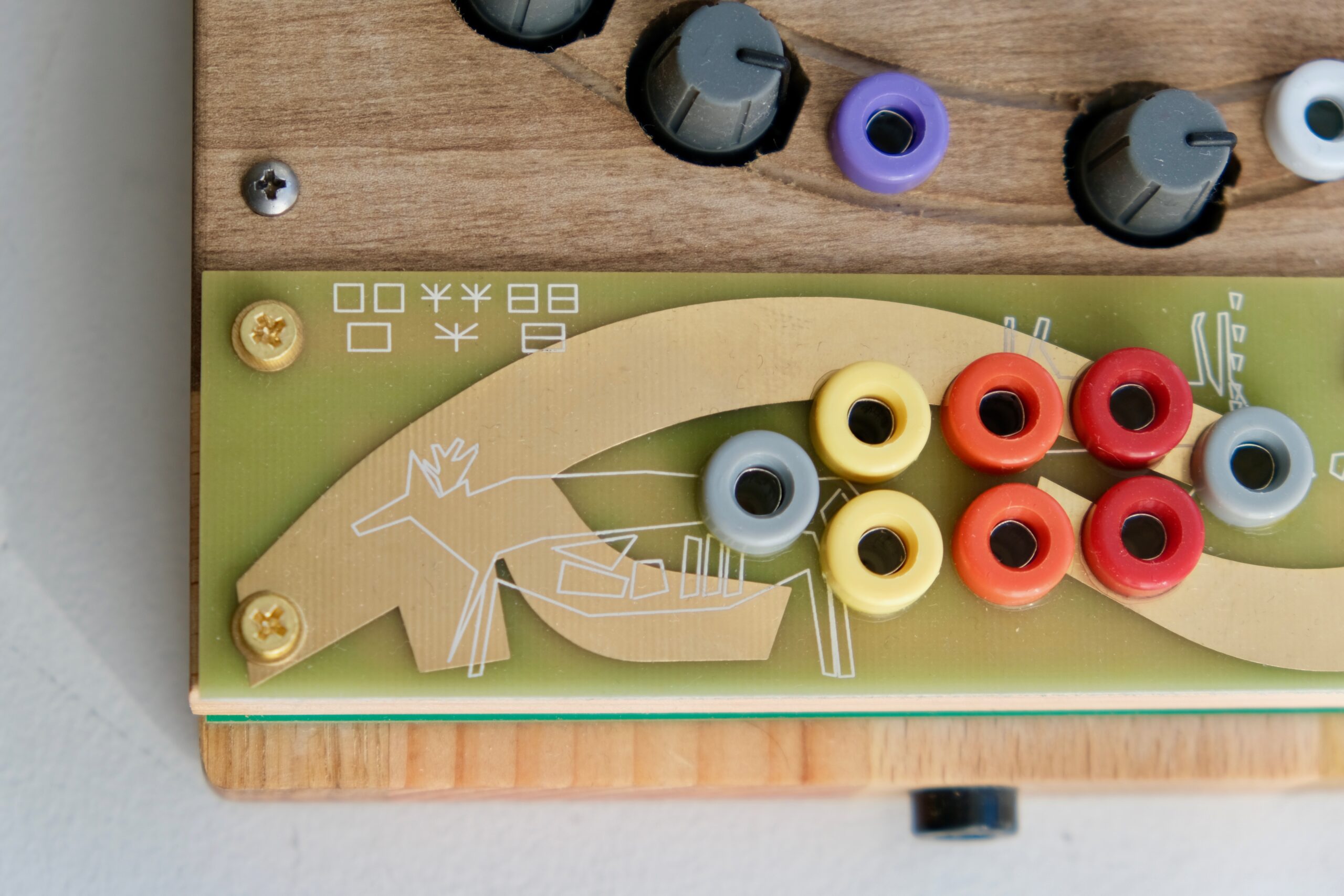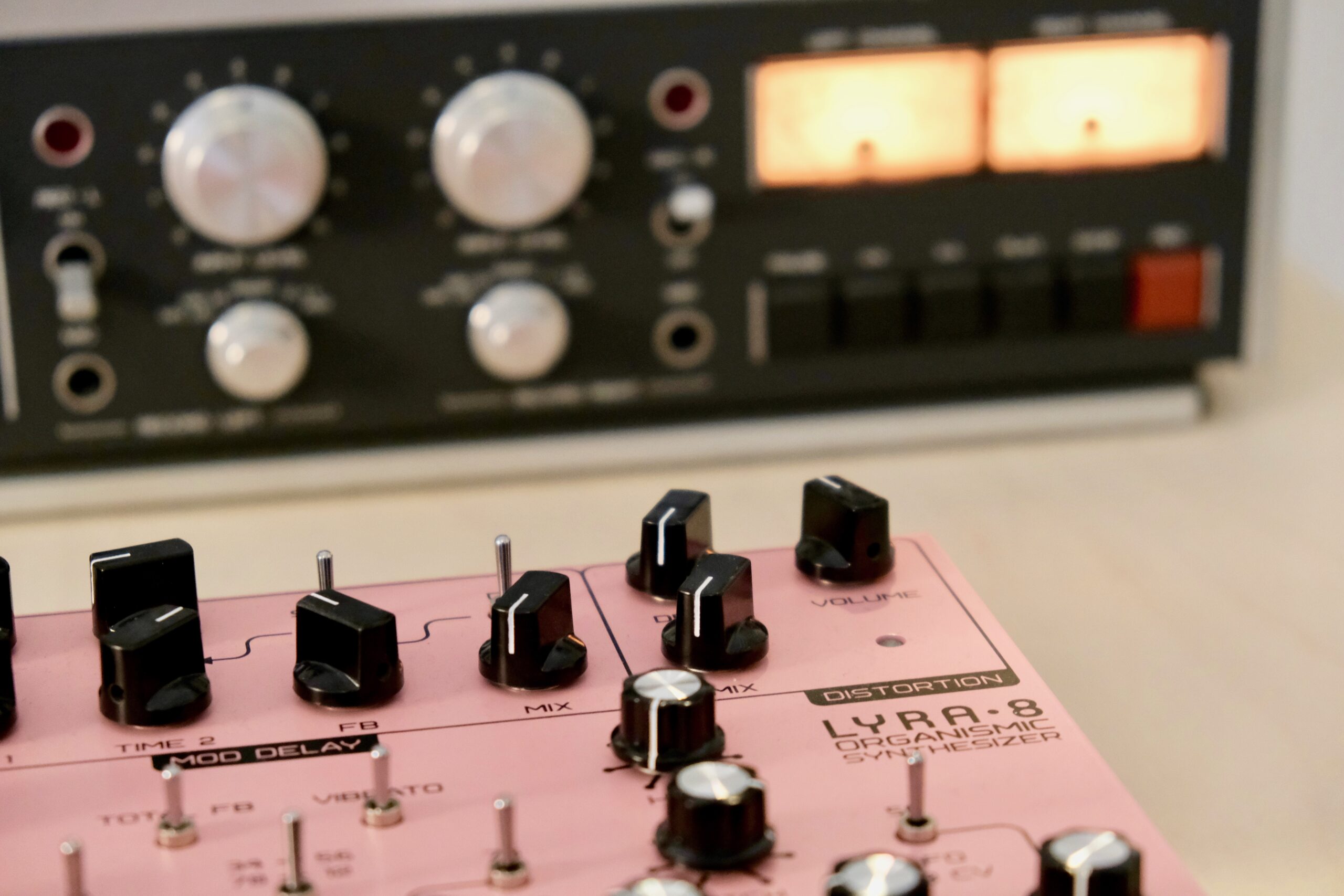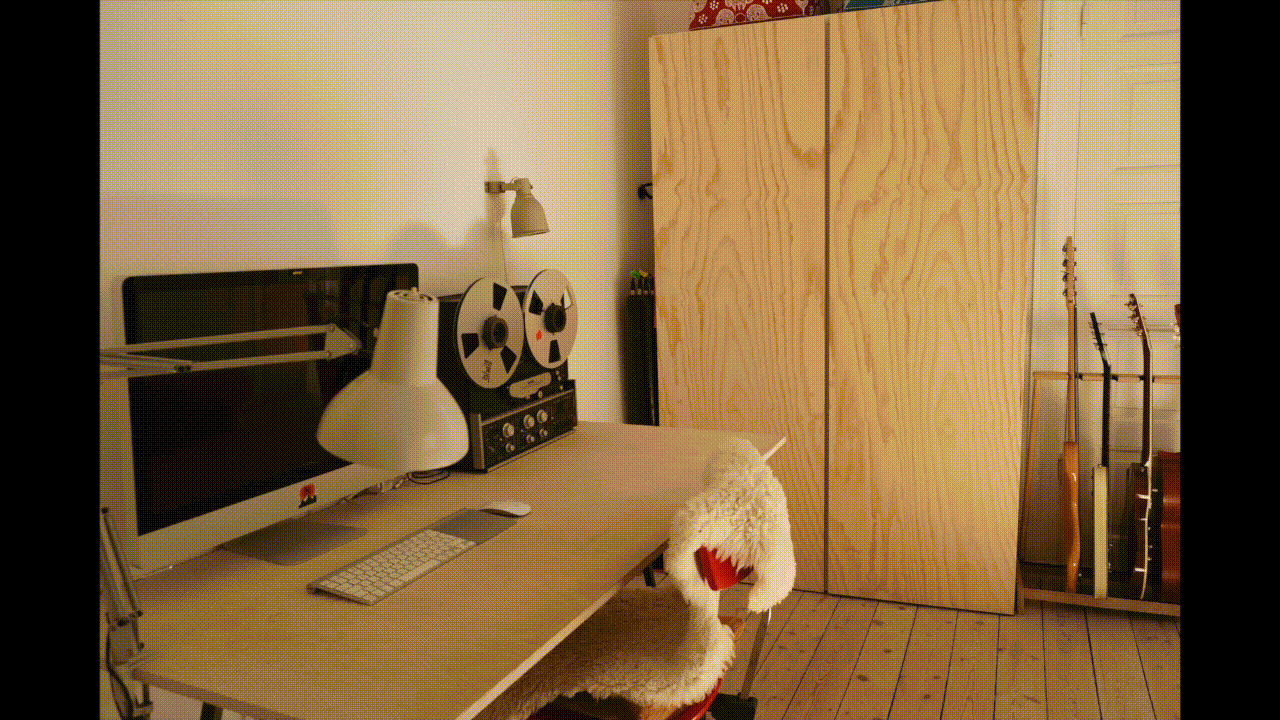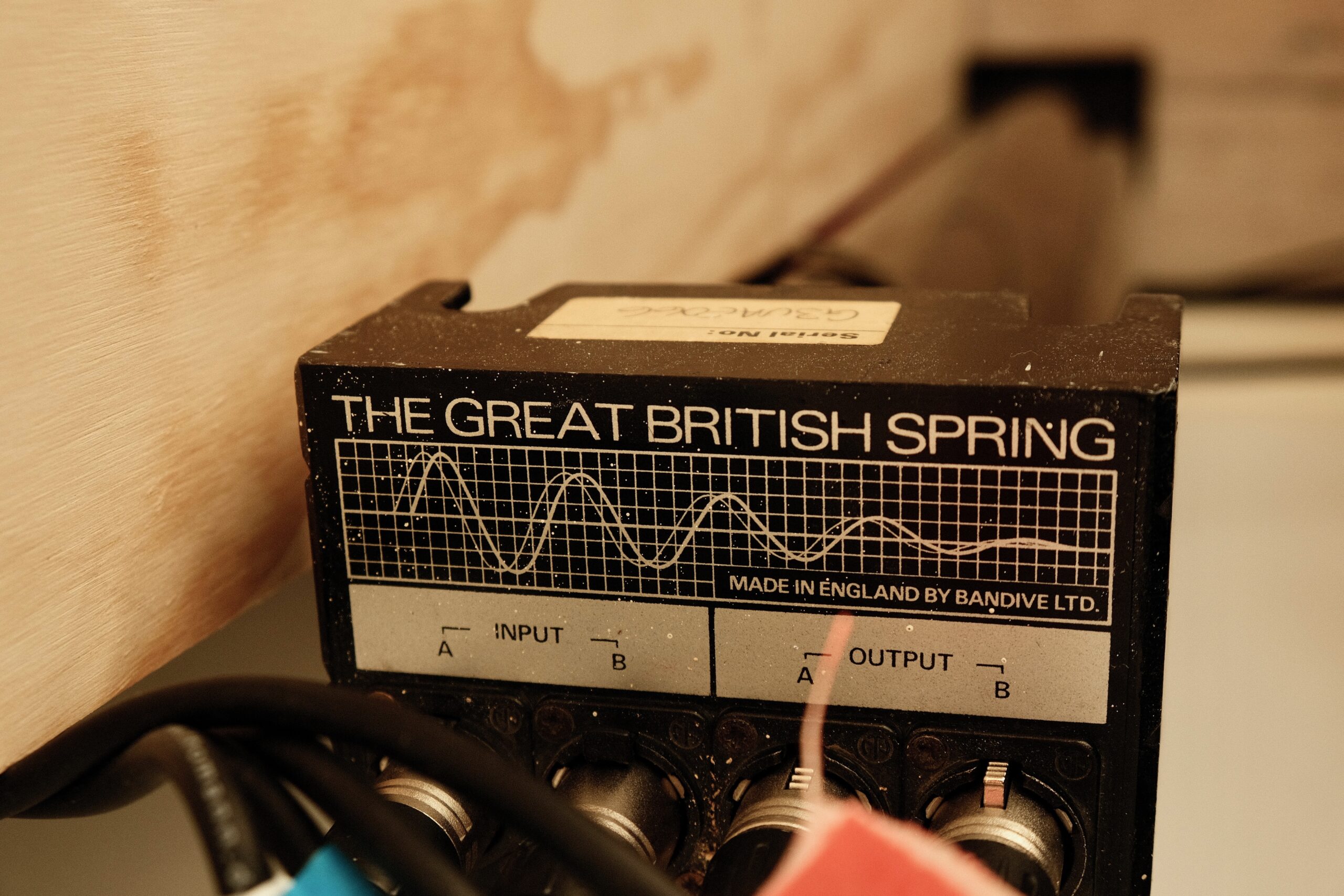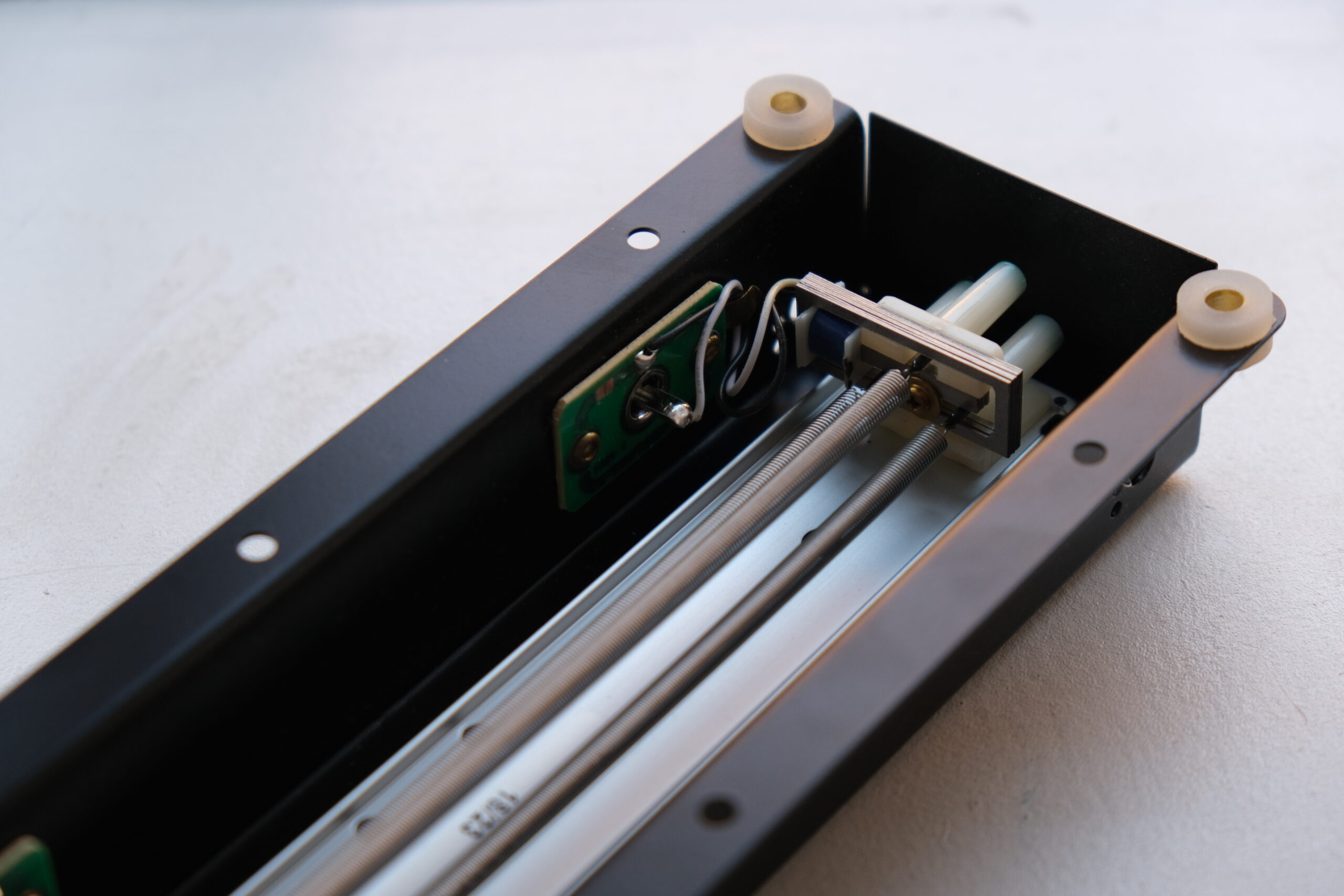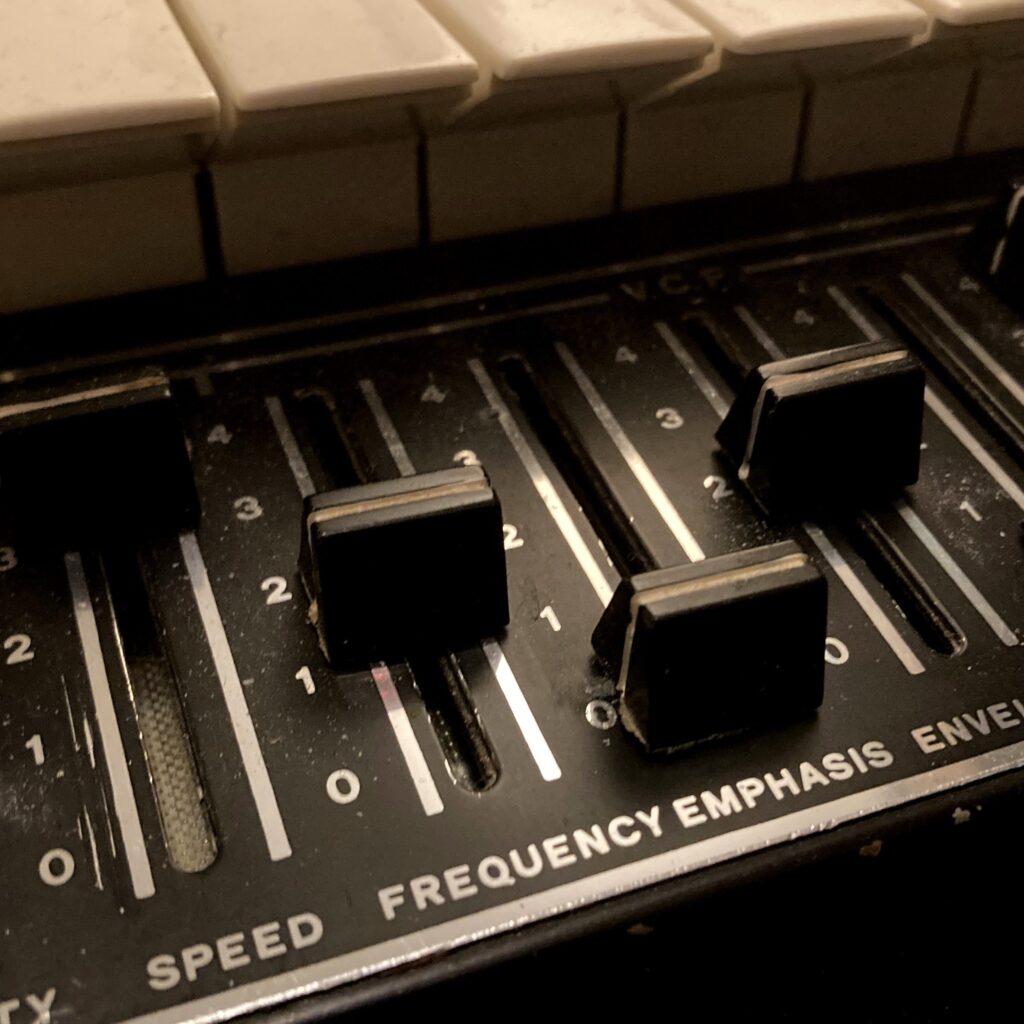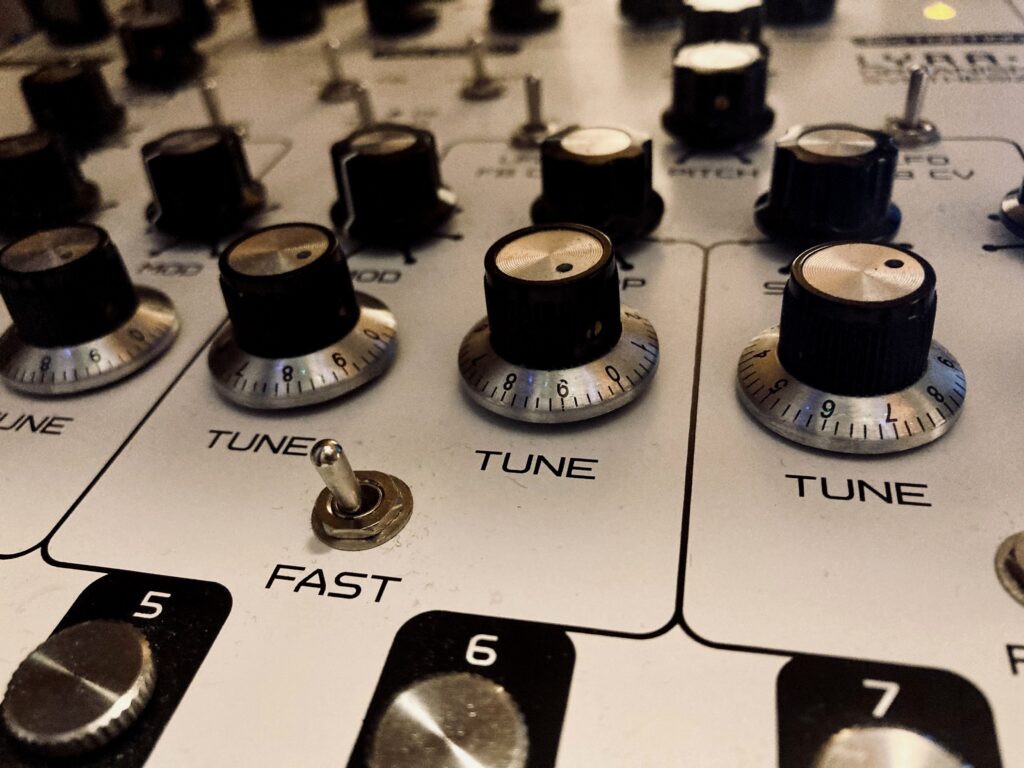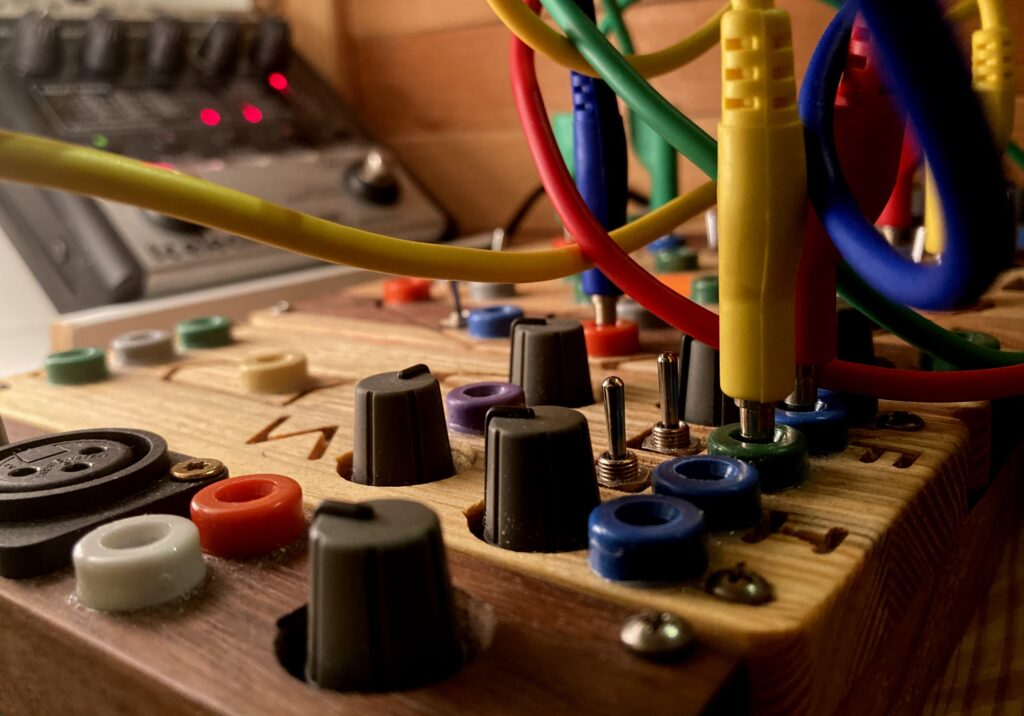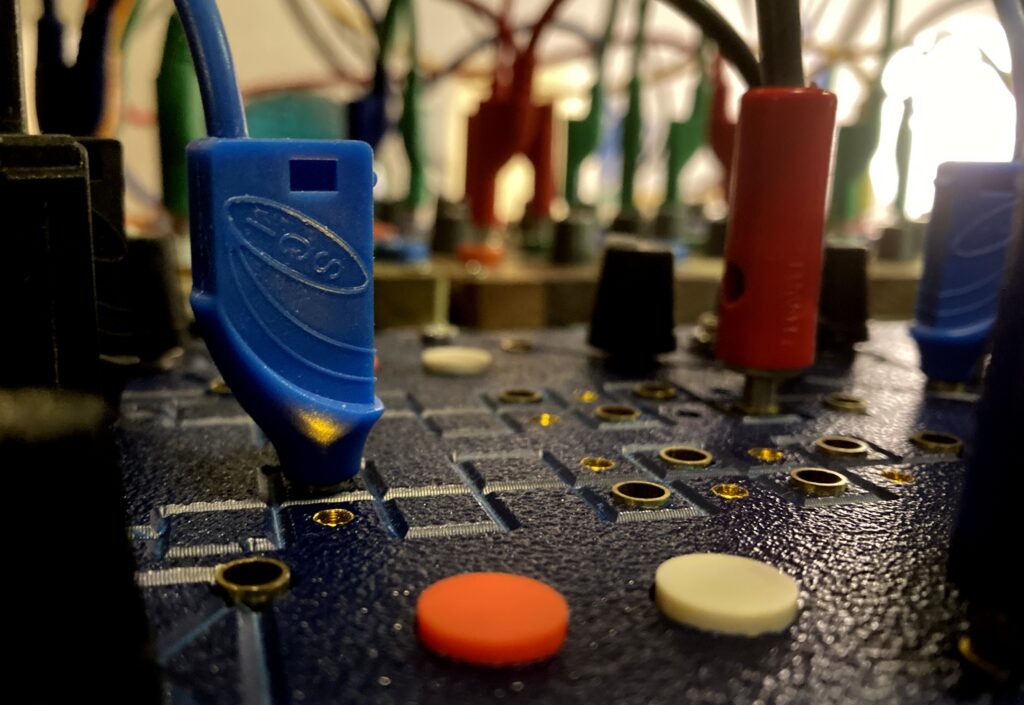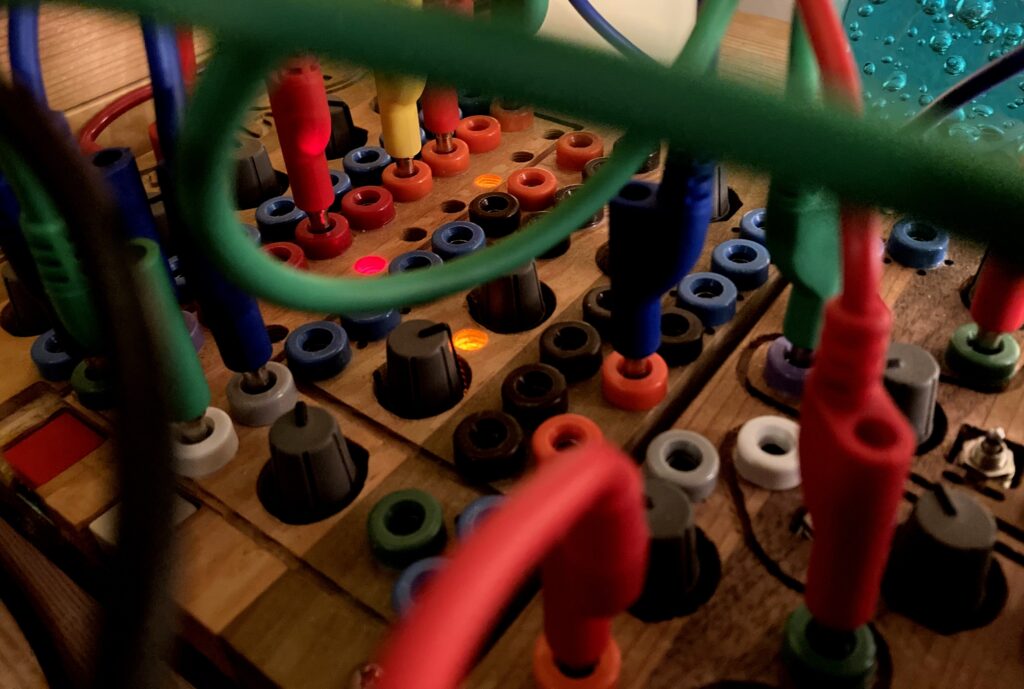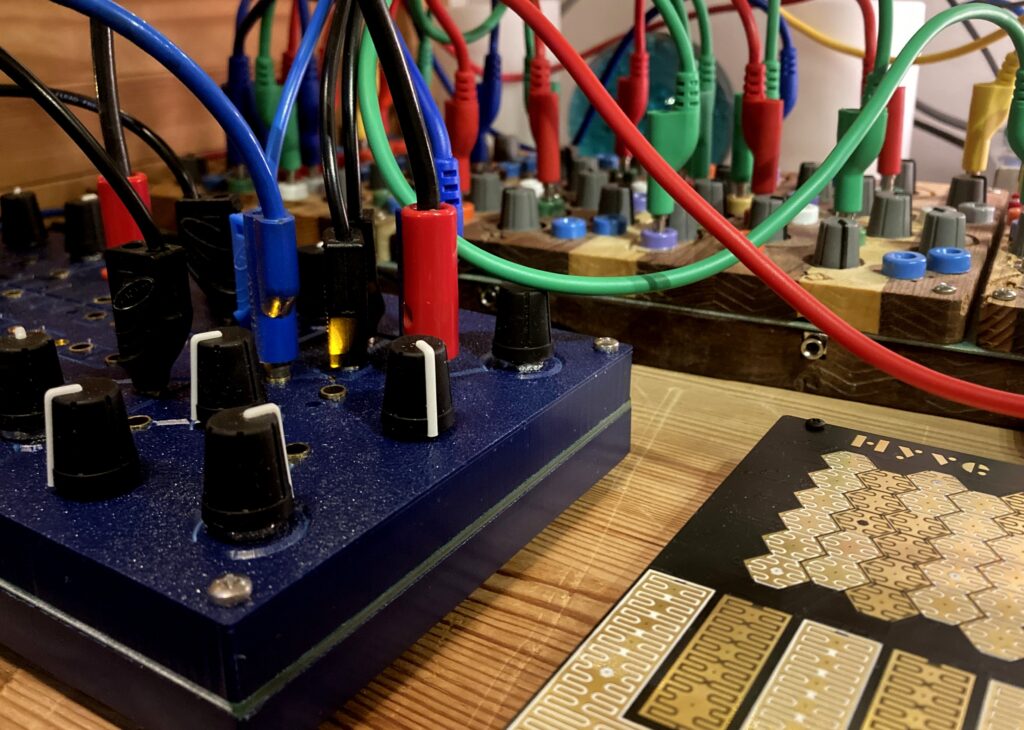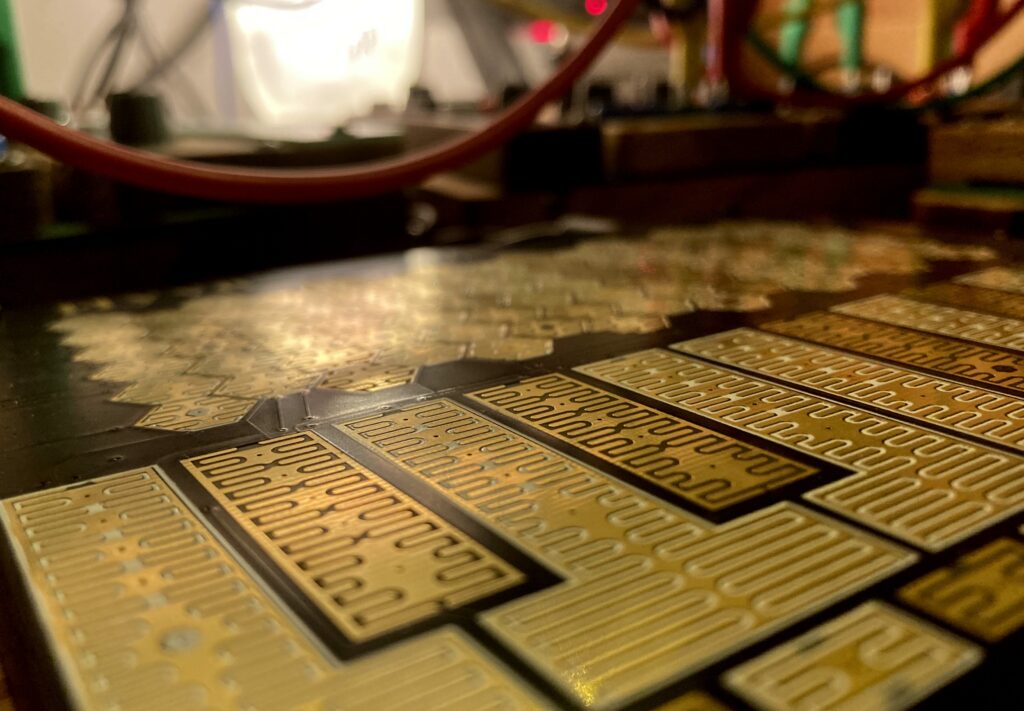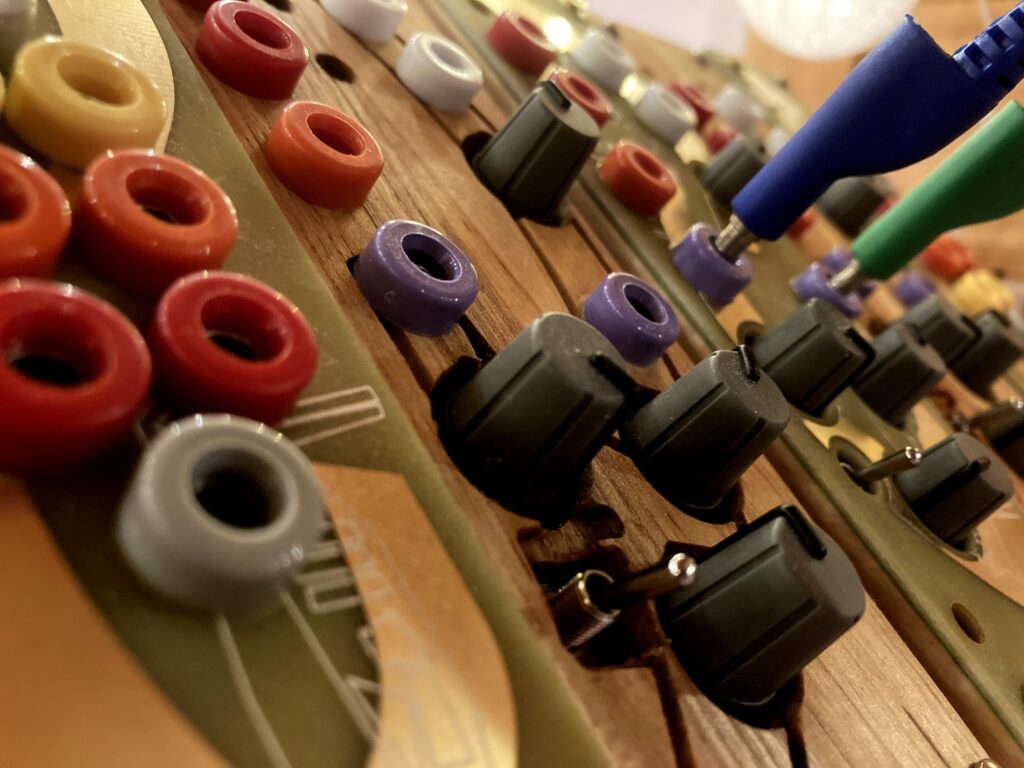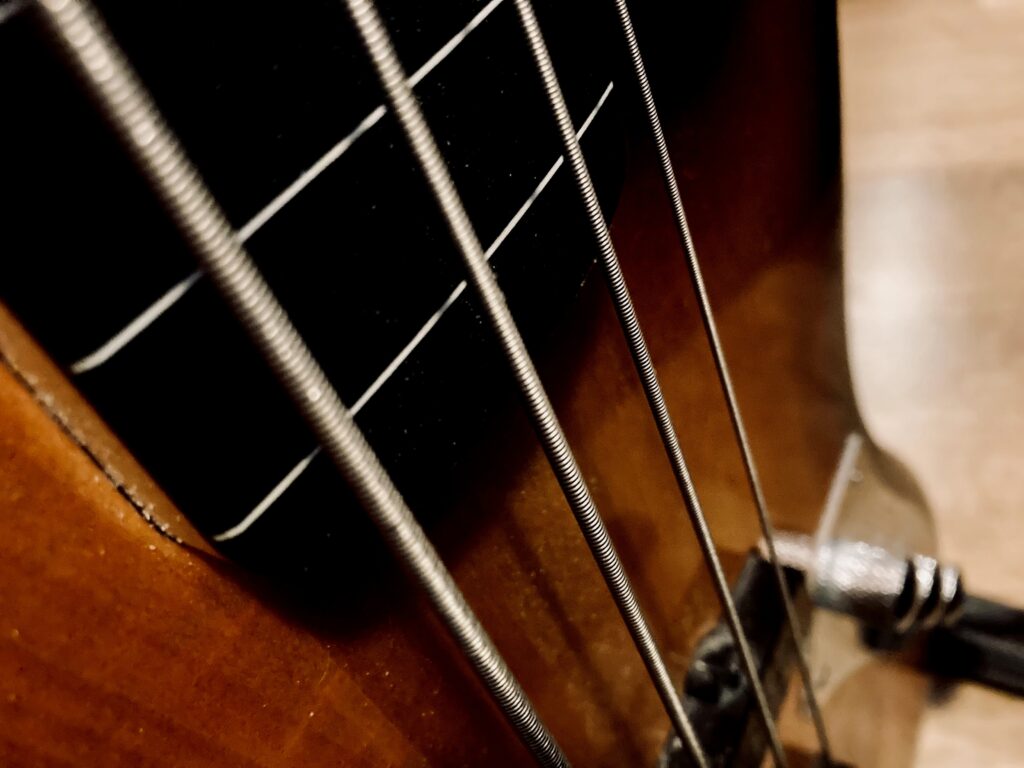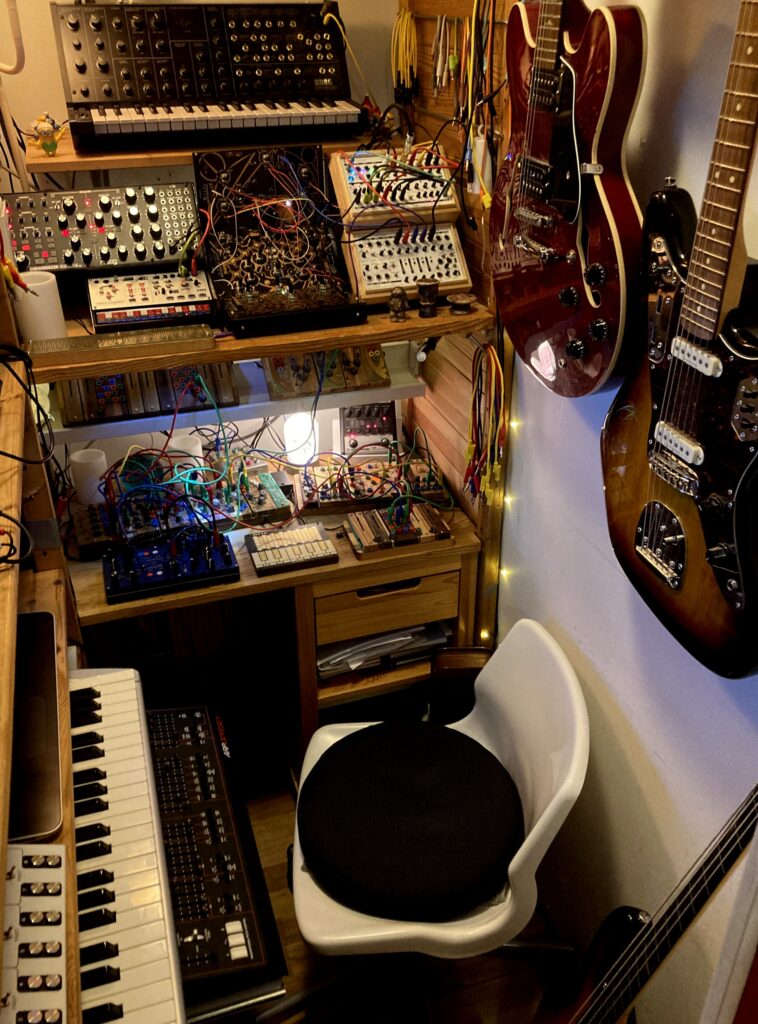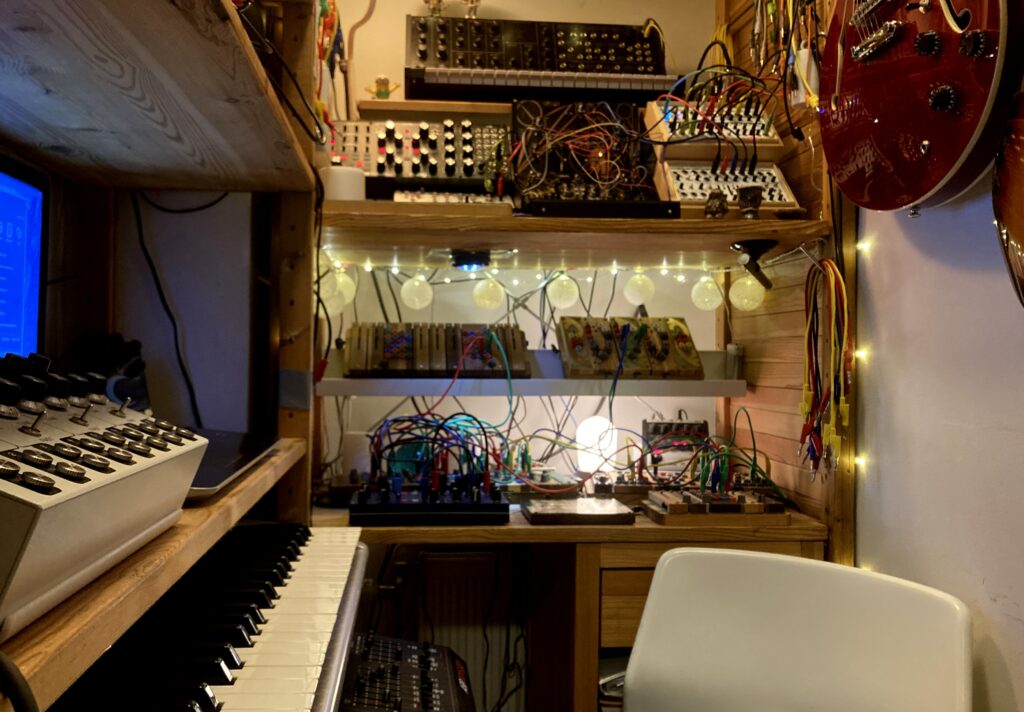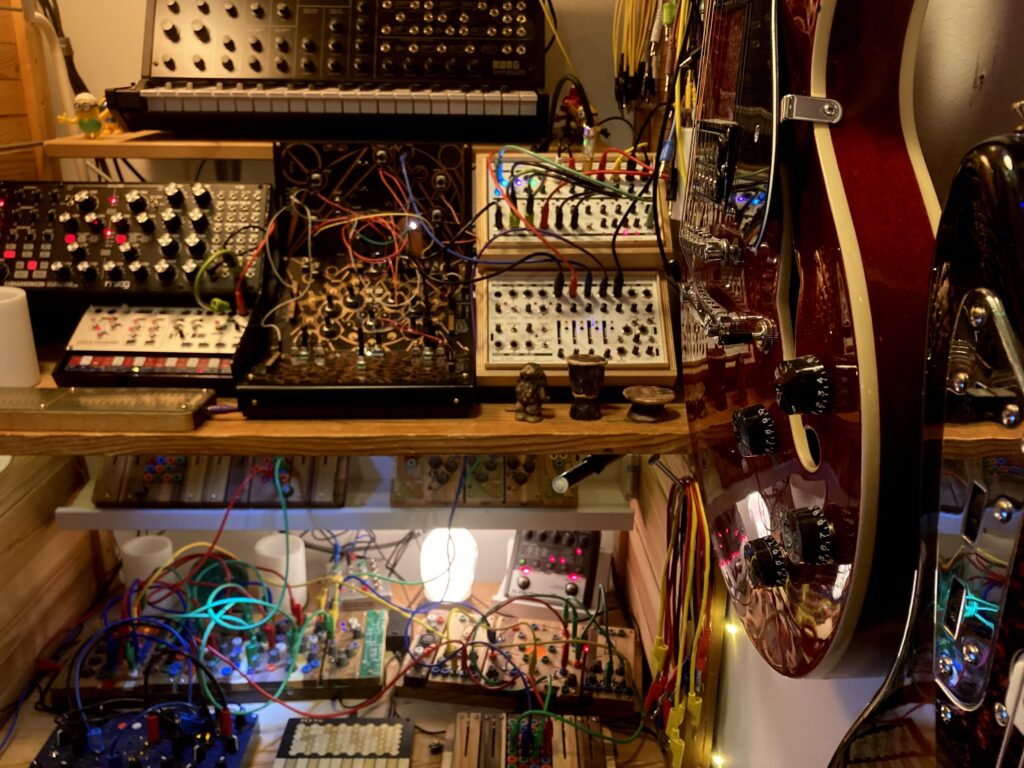1. Favorite knob or fader or switch on a piece of gear and why?
I love the rotary switch that changes between record and playback on the Nagra 4.2.
The beauty of the shape and the feel when turning it, is the best.
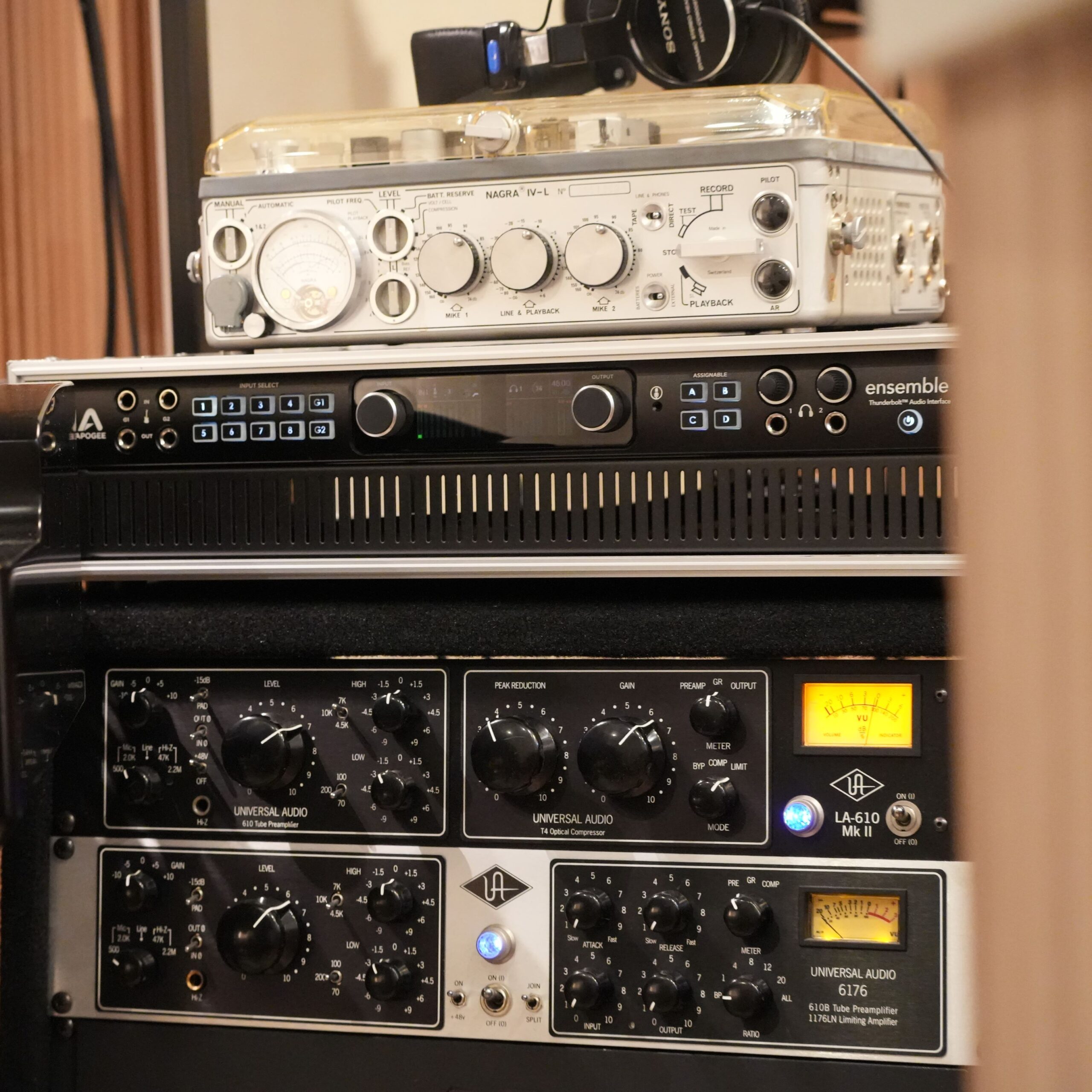
2. Do you have an ‘almost’ perfect bit of kit? What would you change?
Make Noise Morphagene is an almost perfect module. I love the wide range of sample changes and the very clear interface.

I like how easy it is to maneuver something that would be painstaking in software.
The sound quality of the output is a bit peculiar, so a better preamp or VCA built in would be perfect.
But currently I generally run ‘Shallow Water’ or ‘Analog Heat’ through it, so that’s not a problem.
3. What setup do you bring on holiday or tour or commute etc.?
I do very few gigs and try not to bring my instruments on holiday.
However, I always use more than one Nagra for my exhibitions. So no matter where I play, I need a car.
4. What software do you wish was hardware and vice versa?
For software that I wish was hardware, this is definitely ’GRM Tools’!
And vice versa, Ciat-Lonbarde Cocoquantus2.

5. Is there anything you regret selling… or regret buying?
I regret selling ‘Qu-Bit Electronix’s Chance and Prism, so much so that I bought Prism back!
6. What gear has inspired you to produce the most music?
The Fairfield Circuitry Shallow Water.

I was really impressed when I ran a synth through Shallow Water for the first time.
Even simple, cold digital synth sounds and linear sine waves take on a warm, musical character. I completely fell in love with it.
I’m running two ‘Shallow Waters’ through most of the songs on my album ‘Season of Strangers’ which was released this summer.
7. If you had to start over, what would you get first?
Novation Peak maybe! It’s my favorite synth these days.
Peak is also used on many of the tracks I have released this year.
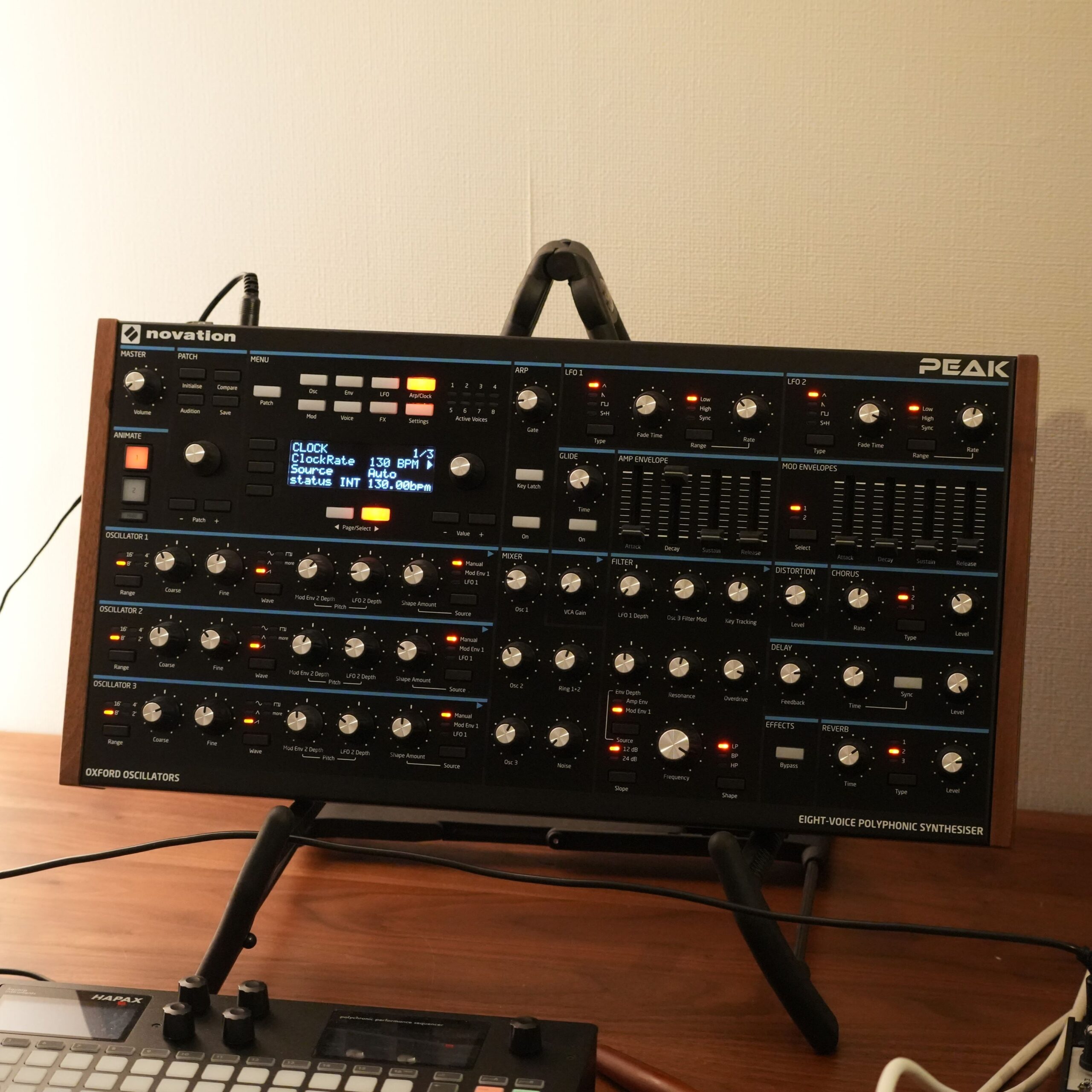
8. What’s the most annoying piece of gear you have, that you just can’t live without?
Nagra reel to reel recorders. I use Nagras not only in my music, but also in exhibitions and art, and they are inseparable from my current expressive activities.

9.Most surprising tip or trick or technique that you’ve discovered about a bit of kit?
I guess I was experimenting with the Intellijel Shifty a lot, and was able to generate a canon.
By purchasing another Shifty, I was able to create complex canons from a single 1V/oct signal.
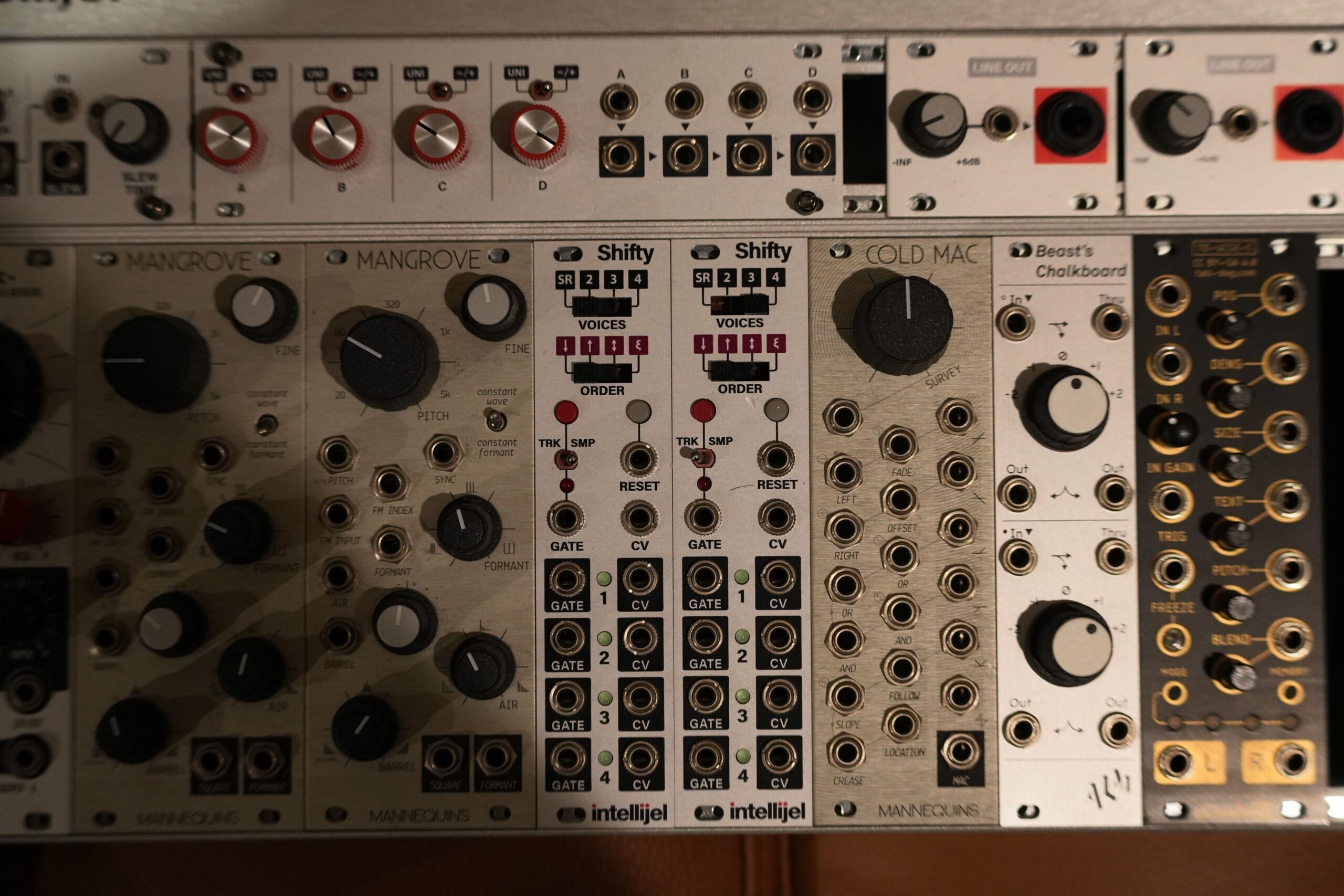
This is a huge digression, but bear with me (lol.)
As a teenager, I was struck by Steve Reich’s many musical techniques.
I didn’t hear his work in chronological order, but probably the first things I heard were “Eight Lines” and “Music for a Large Ensemble.”
These pieces are characterized by a technique in which a single note is found, and then the number of notes increases and increases until it finally becomes a melody.
I still think that this technique is one of the coolest expressions of music, as it combines beauty and perceptual pleasure.
I can’t use that technique in my own work though, because it would really be a rip-off of Reich’s work….
I was also amazed by his other famous techniques such as “phase shifting process” and “augmentation technique.”
I found it difficult to perceive the Serialism music that was popular in the 1960s, but all of Reich’s techniques are perfect for me, combining musical beauty and enjoyment.
Artist or Band name?
Pollypraha and Takeyuki Hakozaki
Genre?
Ambient, Minimal, Contemporary Classical.
Selfie?
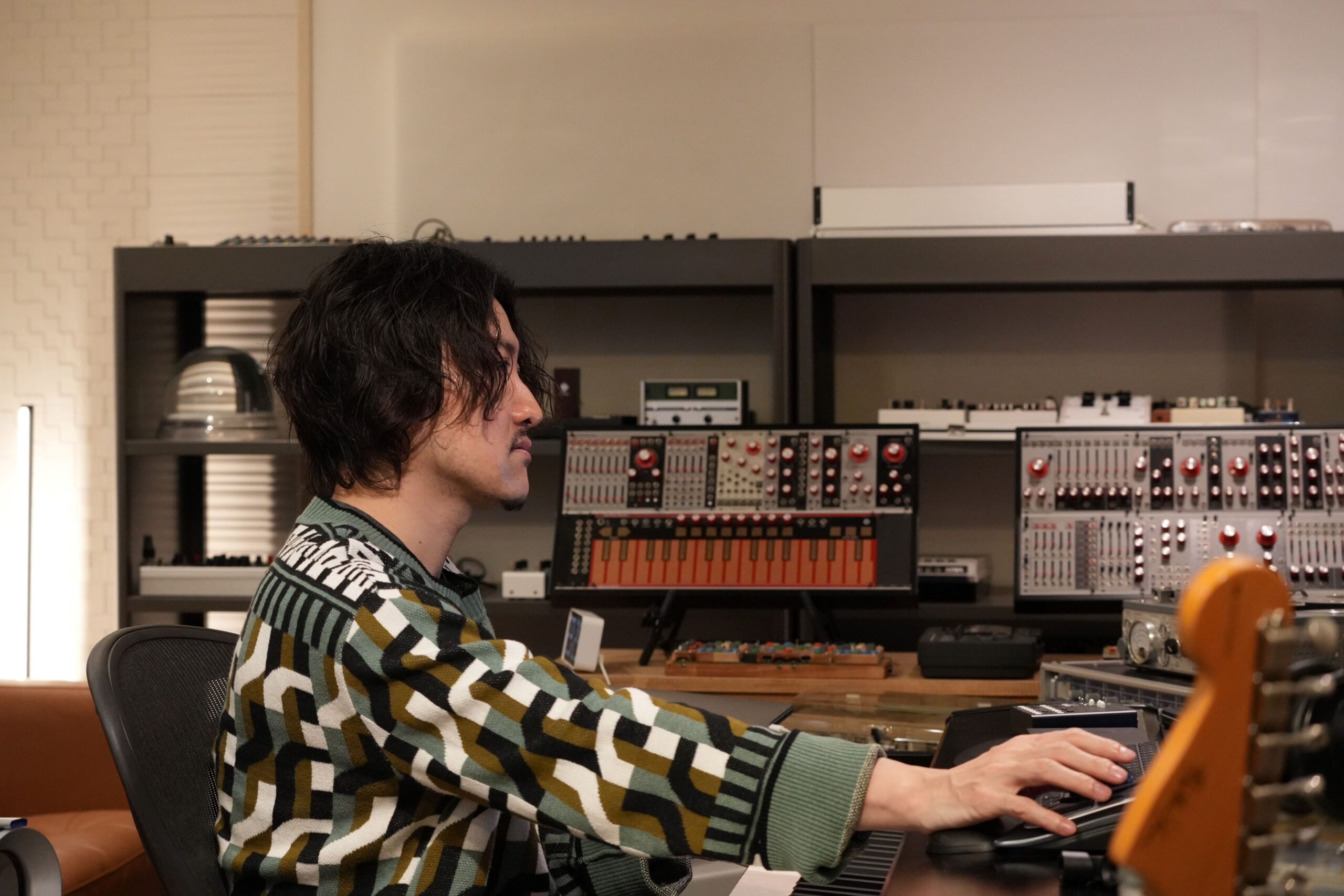
Where are you from?
Born in Kobe, Japan. Now living in Chiba, Japan.
How did you get into music?
I learned to play the trumpet in elementary school. After that, I guess I majored in classical guitar and clarinet. Later, I bought an electric guitar in high school and started composing music.
What still drives you to make music?
Making music has been a habit for over 20 years, just like eating and sleeping, and my body needs it.
How do you most often start a new track?
I often start by coming up with a melody line.
How do you know when a track is finished?
When I think that it’s good enough. I never feel that there is nothing more that could be done with a track, even once it’s been released.
Show us your current studio


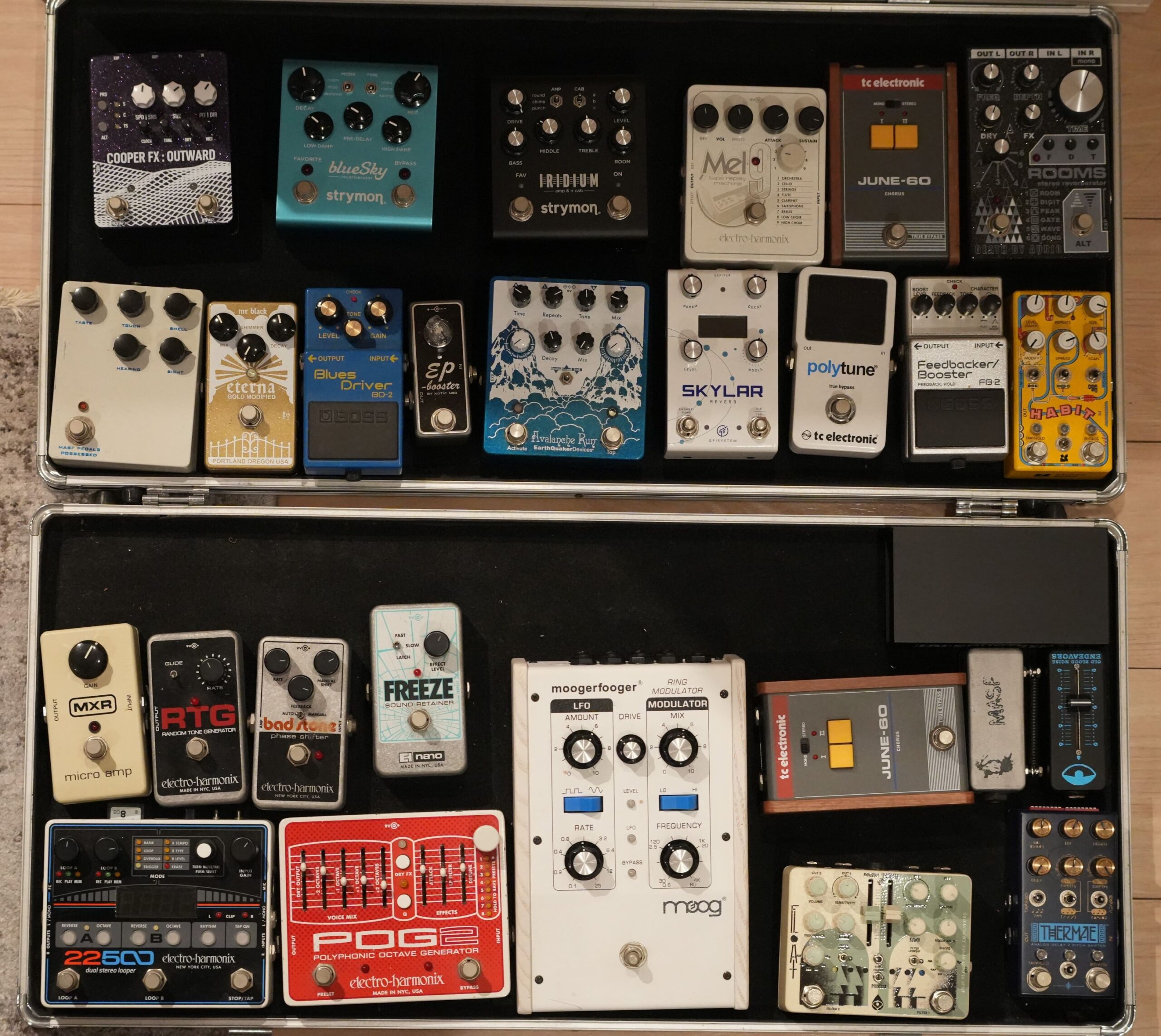
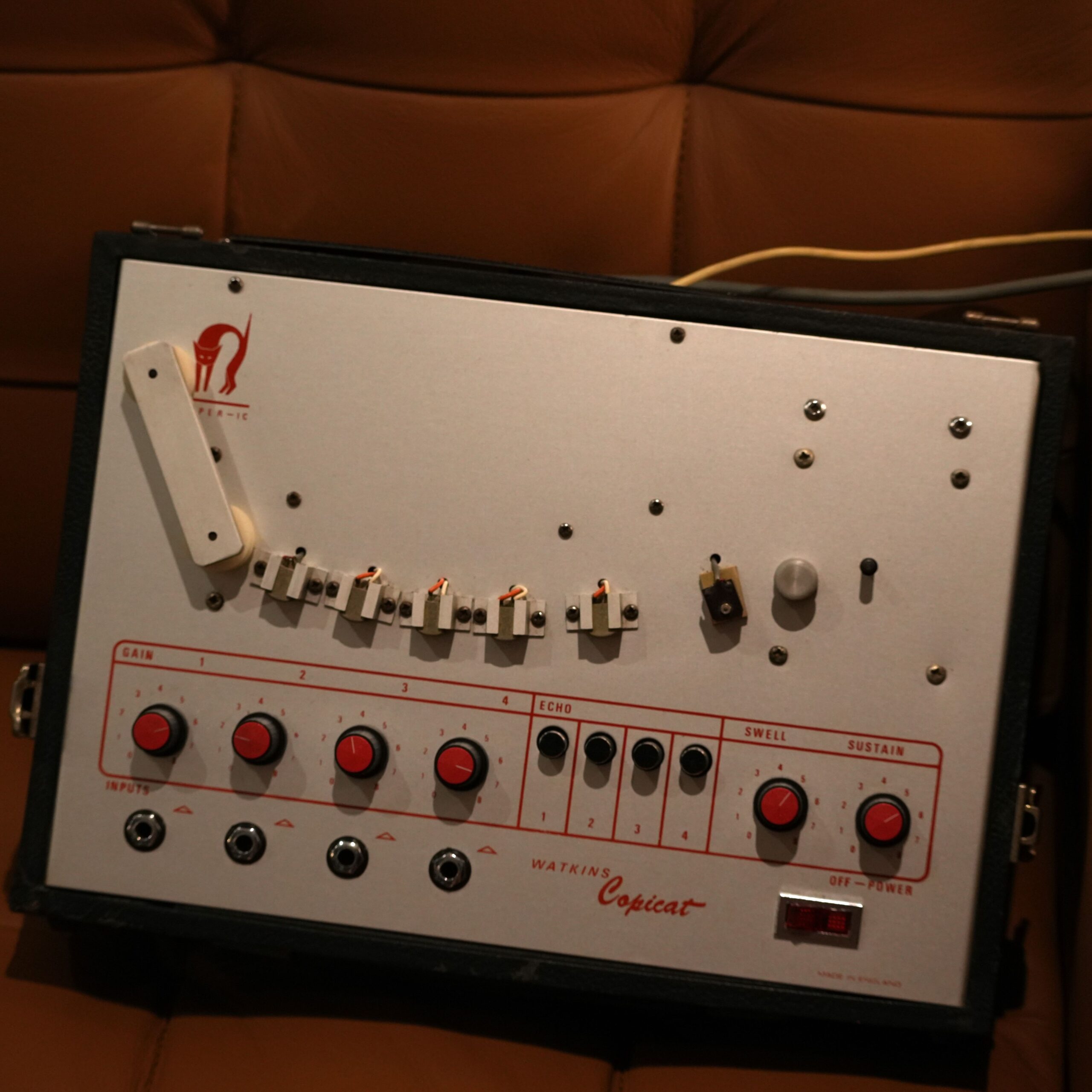

Best creative advice that you’ve ever heard?
I don’t think I have ever received advice on composing music in my life.
In the sense that existence itself is advice, these are the artists I was passionate about as a teenager.
For painters, I was influenced by Sam Francis, for visual artists, Stan Brakhage, for designers, Martin Margiela, and so on.
Through these influences, I learned that expression has no boundaries or limitations. I also learned how to intentionally frame the absence of boundaries and restrictions.
Promote your latest thing… Go ahead, throw us a link.
Trope/Pollypraha
https://pollypraha.bandcamp.com/album/trope
It’s a recently released EP.
